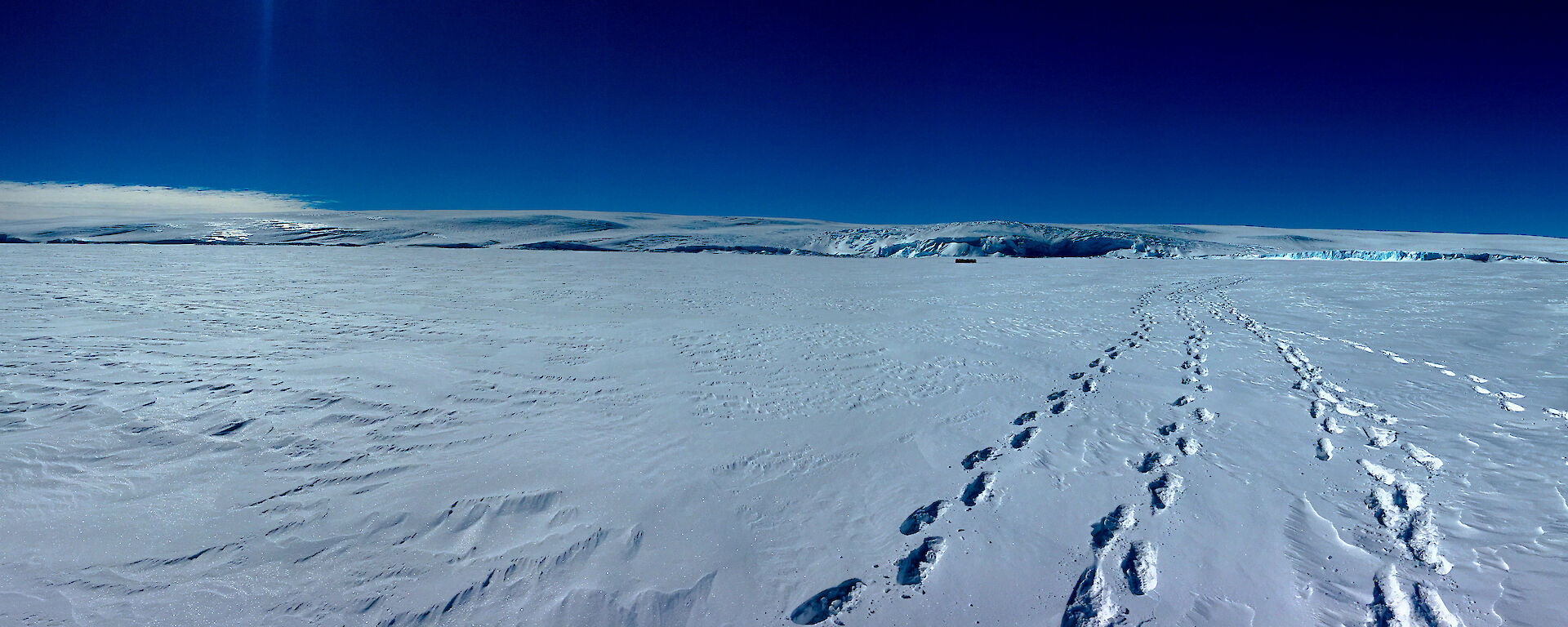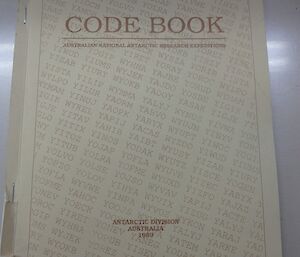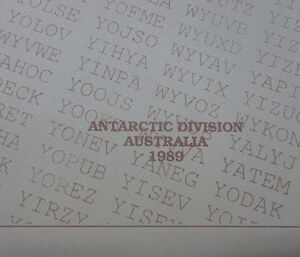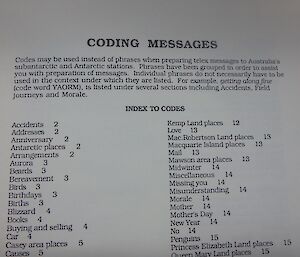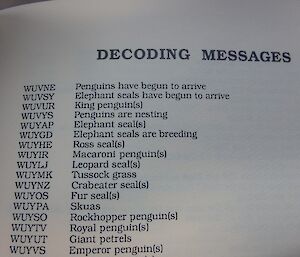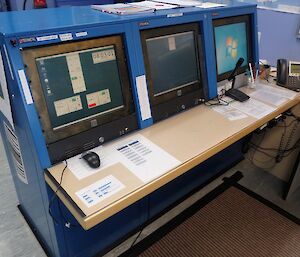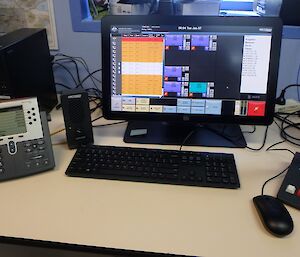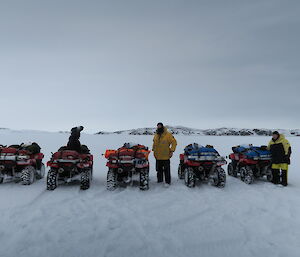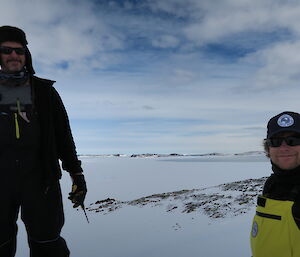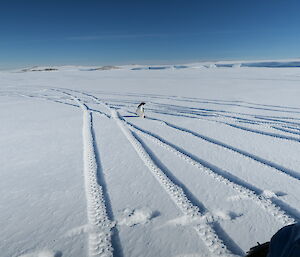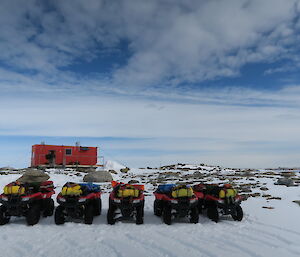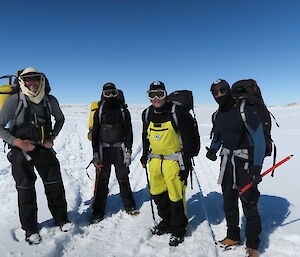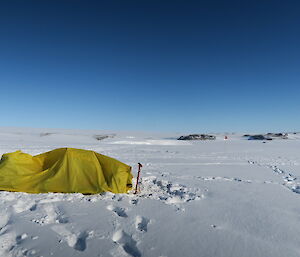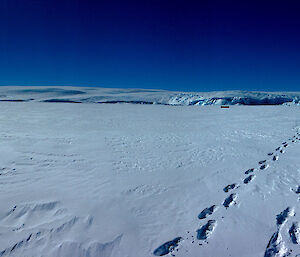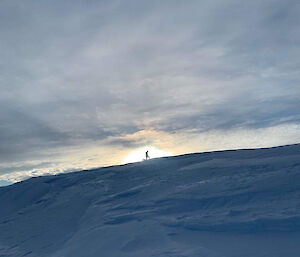VNJ Casey is the call sign name for all radio communications going in and out of the Casey Station Communications Centre.
In 1988, present day Casey station was opened, however communications in 1988 were vastly different to those that are provided at Casey station in our present day.
In 1989 the “Code Book” that was published for the “Australian National Antarctic Research Expeditions” gives us a brief insight as to what expeditioners in those days used to communicate.
The original book is still stored at the VNJ Casey radio room. Simple in theory, the first half of the book breaks messages into themes such as — field journeys, sea ice, misunderstanding, blizzards and holidays, to name a few. With such varied themes, expeditioners of the day would have been able to construct both work reports and personal messages to loved ones.
Each phrase is then allocated a five letter code. The instructions read, “Codes may be used instead of phrases when preparing telex messages,” implying that expeditioners were still permitted to use plain language if required. However, the codes were more efficient.
The second part of the book is dedicated to decoding messages, where the codes are listed alphabetically — so that when the expeditioner received a block of 5 letters, they could quickly reference its meaning.
Moving forward to 2011, VNJ Casey introduced a dual screen communications monitoring console system which visually displays multiple channels from multiple radios. The system, still currently in use, includes a touch screen interface, and voice recording playback, all encased in a purpose built high quality steel cabinet. Short voice radio messages are sent to planes, boats and around station, and if required VNJ Casey can make satellite phone calls anywhere in the world. Longer messages can be typed and sent via e-mail, in the same you would send e-mails from your personal e-mail account.
The present system has served the station well for many years. However, we are all excited about the future console that is in the process of being integrated as we write this article. It will be ergonomic, fast, efficient and all encompassing. The new console’s capabilities will offer a similar service, with a few added intelligent features, all wrapped up in a single touch screen monitor, microphone and headset.
The building is abuzz with a dedicated two-person installation team toiling to ensure that the system is installed and tested to the highest standard, working with the core communications operators every day. It is an exciting time to be here during these changes, and I cannot help but wonder what the future radios and interfaces may look like during the next upgrade whenever that may be.
One big question though — once the new console is officially online and the old cabinet is removed — what will we do with all the extra space?
- Casey Communications Team

